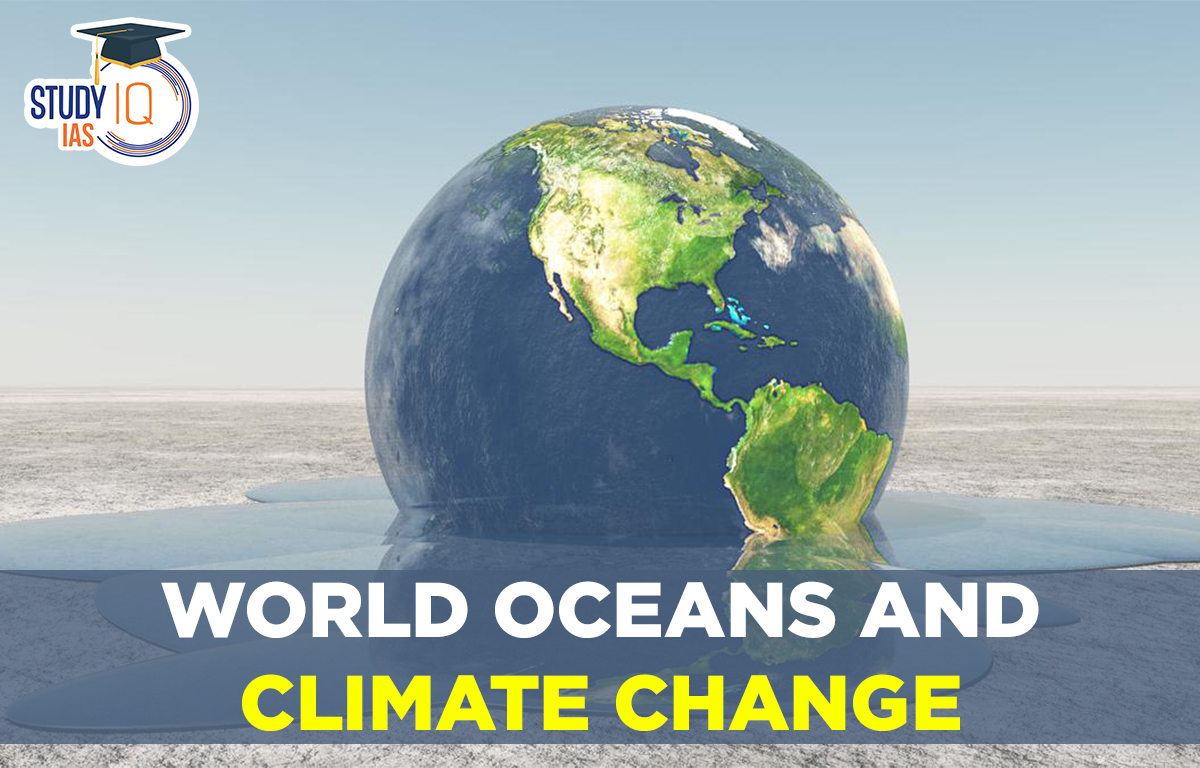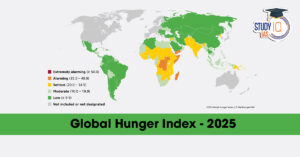Key Highlights of World Oceans and Climate Change
Important Ocean Indicators of Climate Change
- Ocean Heat Content (OHC): It is the amount of energy absorbed by and stored in the oceans. It is measured in joules, the unit of energy.
- More than 90% of the excess heat accumulated in the earth’s climate is deposited in the oceans.
- Rising OHC strengthen the exchange of energy from oceans to the atmosphere by increasing the evaporation of water and thus the quantity of atmospheric moisture. This leads to changes in global precipitation patterns as well as temperatures.
- Ocean Salinity: It refers to the amount of salt dissolved in ocean water. It is typically measured in parts per thousand (ppt).
- Salinity determines water density, which drives the circulation of water in oceans.
- Over time, changes in salinity of oceans include large areas and act as an indicator of a change in the water cycle.
- The study used salinity-contrast index, defined as the difference between the salinity averaged over climatologically high-salinity and low-salinity regions.
- Vertical stratification: Together, temperature and salinity changes in oceans change the density of water and lead to vertical stratification.
- This stratification hinders water mixing and consequently the exchange of heat, carbon, oxygen and so on between layers.
- As a result, stratification, along with OHC and salinity-contrast index becomes an important element in quantifying climate change.
Key Trends Identified
- Ocean Warming:
- The world’s oceans were at their hottest ever on record in 2022.
- Atlantic and southern oceans are heating at a faster rate than other ocean basins.
- The increasing occurrences of heatwaves and droughts in the northern hemisphere are consistent with the intensive ocean warming in the mid-latitude Pacific and Atlantic oceans.
- The rise in ocean temperatures is a result of the earth’s energy imbalance, primarily associated with an increase in greenhouse gas emissions.
- Ocean Salinity:
- The salinity-contrast index also reached its highest level on record in 2022.
- Most of the Pacific and East Indian Oceans are currently undergoing a freshening.
- Mid-latitude Atlantic, the Mediterranean Sea and West Indian oceans are becoming more saline.



 Light Weight Modular Missile (LMM) — I...
Light Weight Modular Missile (LMM) — I...
 Species Survival Commission (SSC) – IU...
Species Survival Commission (SSC) – IU...
 Global Hunger Index (GHI) 2025: India Ra...
Global Hunger Index (GHI) 2025: India Ra...




















